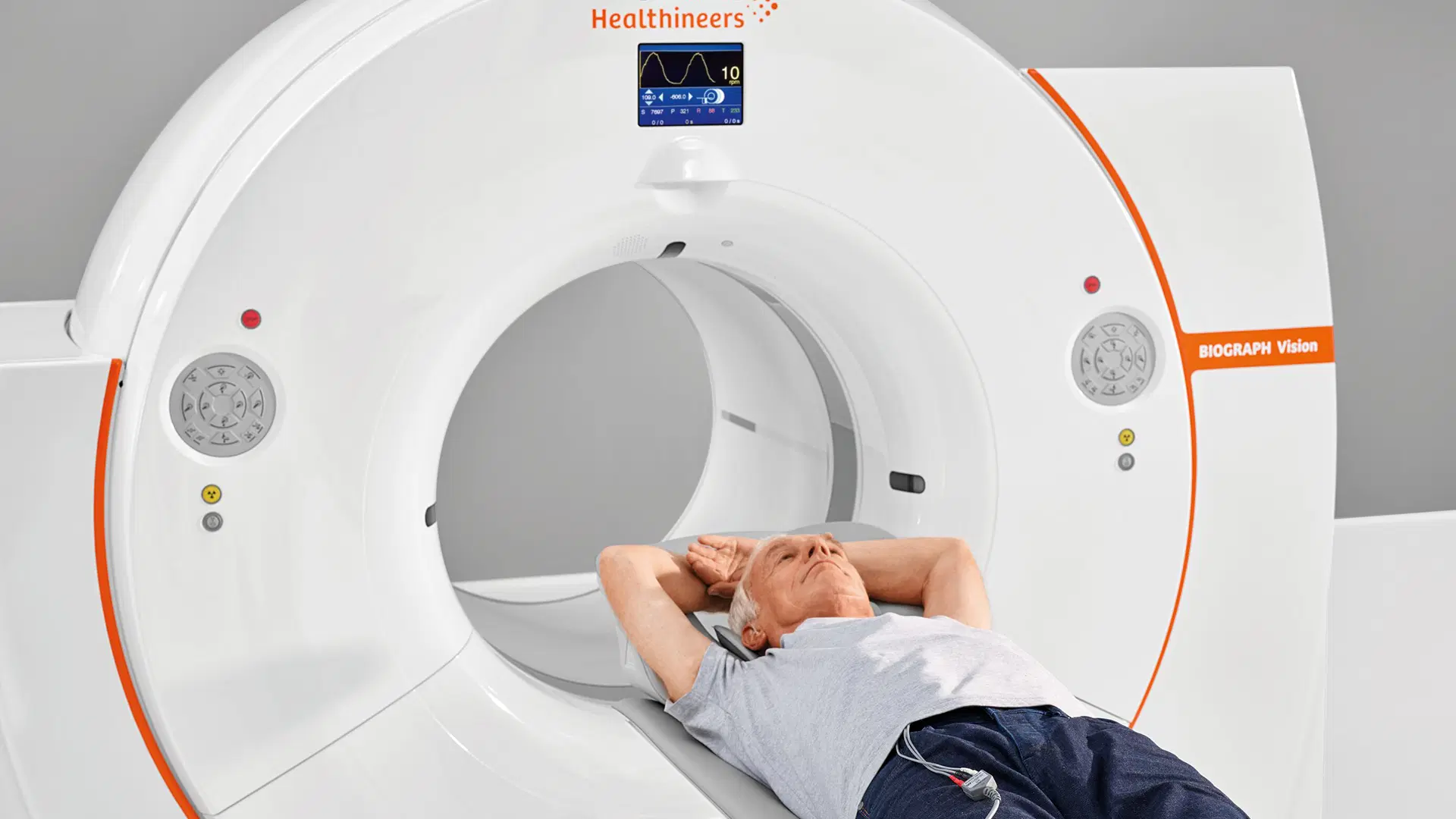Last Updated on November 26, 2025 by Bilal Hasdemir

Lumbar back pain can really disrupt your life. It can make everyday tasks hard and affect your mood. Luckily, there’s a minimally invasive solution called the facet injection procedure. It can help ease your pain. Step-by-step guide on performing a facet injection procedure for lumbar back pain relief.
This method involves injecting an anesthetic and corticosteroid into the facet joints. These joints are often found at the L4-L5 level in the lower back. It helps reduce pain and improve movement. Plus, it’s done as an outpatient, making it a convenient option for many.
At Liv Hospital, we focus on our patients first. We aim to meet international care standards. Our goal is to manage your pain effectively and enhance your quality of life.
Key Takeaways
- Facet injection procedure is a minimally invasive technique for relieving lumbar back pain.
- The procedure involves delivering anesthetic and corticosteroid into the facet joints.
- It is used for both diagnostic and therapeutic purposes.
- Liv Hospital follows a patient-centered approach with international standards in care.
- The procedure is typically performed on an outpatient basis.
Understanding Lumbar Facet Joint Injections

Lumbar facet joint injections are getting more attention in medicine. They help diagnose and treat pain. Many people find relief from back pain thanks to these injections.
Facet joints are important in the spine. They can hurt when they’re inflamed or injured. Lumbar facet joint injections aim to ease this pain.
What Are Facet Joints and Their Role in Back Pain
Facet joints connect the vertebrae, helping the spine move. Pain in the low back, buttocks, groin, and hips can be from facet joints. These joints are at the back of each vertebra.
When facet joints get inflamed or injured, they can cause a lot of pain. This pain is called facet-mediated pain. Knowing how facet joints affect back pain helps find the right treatment.
Mechanism of Action for Pain Relief
Lumbar facet joint injections put a local anesthetic and/or corticosteroid into the joint. The anesthetic numbs the area right away. The corticosteroid helps reduce inflammation for longer pain relief.
The procedure is done under fluoroscopic guidance. This ensures the medication goes exactly where it needs to. By targeting the pain source, lumbar facet joint injections can greatly help those with chronic lower back pain.
We use these injections for both treatment and diagnosis. They help confirm that facet joints are the cause of pain. This makes them a key part of pain management plans.
Clinical Indications for Facet Injections in Back

Facet injections are key in pain management for back pain from facet joints. They help when chronic pain doesn’t respond to usual treatments or physical therapy.
Diagnostic Applications
Facet injections help find if facet joints cause back pain. An anesthetic is injected into the joint to see if pain goes away. This confirms if the joint is the pain source.
A study in Pain Medicine says facet injections are the best way to find facet joint pain. This method helps doctors know exactly where the pain comes from, guiding treatment.
Therapeutic Applications
Facet injections use an anesthetic and corticosteroid to treat pain. The corticosteroid reduces swelling, and the anesthetic stops pain right away.
These injections are great for chronic facet joint syndrome. A review in The Spine Journal shows they can greatly reduce pain and improve function.
| Therapeutic Agent | Mechanism of Action | Expected Outcome |
| Corticosteroid | Reduces inflammation | Long-term pain relief |
| Anesthetic | Blocks pain signals | Immediate pain relief |
When to Consider Facet Injections Over Other Treatments
Consider facet injections when other treatments like physical therapy or pain meds don’t work. They’re best for pain that only affects the facet joints, as shown by tests.
“Facet joint injections are a valuable treatment option for patients with chronic back pain who have failed more conservative management strategies.”
– Journal of Pain Research
In summary, facet injections are a powerful tool for diagnosing and treating back pain. They help doctors target pain from facet joints, giving patients much-needed relief.
Patient Selection and Contraindications
Choosing the right patients for lumbar facet injections is key to success. We carefully check candidates to make sure they will benefit and avoid risks.
Ideal Candidates for the Procedure
Those who are best for lumbar facet injections have chronic lower back pain. This pain hasn’t gotten better with usual treatments like physical therapy or medicine. Facet injections help by reducing inflammation and numbing the pain.
We look for patients with a history and physical exam that shows facet-mediated pain. We might also use MRI or CT scans to help confirm the diagnosis. It’s important for patients to understand the procedure, its benefits, and risks.
Absolute Contraindications
Some conditions make facet injections not safe or not right. Absolute contraindications include:
- Active infection or systemic illness
- Coagulopathy or bleeding disorders
- Known allergy to the injectate (e.g., corticosteroids or local anesthetics)
- Pregnancy (relative, depending on the use of fluoroscopy)
Patients on blood thinners need to stop them before the procedure. This is to lower the risk of bleeding.
Relative Contraindications
Relative contraindications are conditions that might make the procedure riskier or less effective. These include:
- Uncontrolled diabetes
- Severe psychological overlay
- Localized infection at the injection site
- Unrealistic patient expectations
We look at each patient’s health and medical history. We decide if the benefits of facet injections are worth the risks. Patients must tell us about any bleeding disorders or medicines that could increase bleeding risk.
By choosing patients wisely and knowing the contraindications, we can make lumbar facet injections safer and more effective.
Pre-Procedure Assessment Protocol
The pre-procedure assessment is key to getting patients ready for facet injections. It makes sure the procedure is safe and works well. We check our patients carefully before starting to lower risks and improve results.
Required Medical History Elements
Getting a full medical history is vital. It helps us find out if there are any reasons why the treatment might not work. We look at:
- Previous medical conditions, like diabetes, high blood pressure, and bleeding problems
- Allergies, to local anesthetics or steroids
- Current medications, including blood thinners
- Previous spinal surgeries
- History of bad reactions to contrast media
Physical Examination Techniques
A detailed physical check-up is important. It helps us see how healthy the patient is and if there are any problems. Our check-up includes:
- Neurological assessment to check how nerves and muscles are working
- Musculoskeletal examination to see how well the body moves and if there’s pain
- Evaluation of spinal alignment and posture
Necessary Imaging Studies
Imaging tests are also key. They let us see the facet joints and what’s around them. We usually need:
- Recent MRI or CT scans to look at the facet joints and find any issues
- X-rays to check the spine’s alignment and for any bone problems
By using all these steps, we make sure our patients are well-prepared for facet injections. This helps us avoid risks and get the best results.
Equipment and Materials for the Facet Injection Procedure
Facet injections for lumbar back pain use advanced medical tools and special medications. The success of the procedure relies on the right preparation of these elements. This ensures both safety and effectiveness.
Medication Preparation
The medications for facet injections include a local anesthetic and a corticosteroid. The local anesthetic gives immediate pain relief. The corticosteroid helps reduce inflammation over time.
Preparing these medications is very important. The anesthetic and corticosteroid are put into separate syringes for accurate dosing. The syringes are then labeled and ready for the procedure.
“The use of corticosteroids in facet injections has been shown to provide significant pain relief for patients with lumbar facet syndrome.”
Journal of Pain Research
Procedural Tools and Equipment
The tools needed for a facet injection include a sterile tray with needles, syringes, and a sterile drape. Fluoroscopic guidance is essential for precise needle placement.
| Equipment | Description |
| Fluoroscope | Provides real-time X-ray imaging for needle placement |
| Sterile Needles | Used for injecting medication into the facet joint |
| Syringes | Contain the medication to be injected |
Fluoroscopy Setup and Parameters
Fluoroscopy is key in the facet injection procedure. It allows for real-time imaging of needle placement. The fluoroscope is set up to give a clear view of the facet joint.
The fluoroscopy settings are adjusted for the best image quality. This is done while keeping radiation exposure low for the patient and staff.
- Adjust the fluoroscope to the correct angle for optimal viewing of the facet joint.
- Use a low-dose radiation setting to minimize exposure.
- Ensure the image is clear and centered on the target area before proceeding with the injection.
Patient Preparation and Positioning
Getting patients ready and positioned right is key for safe and accurate facet injections. We make sure our patients are well-informed and feel comfortable during the whole process.
Pre-Procedure Instructions
We give patients clear steps to follow before the injection. This includes advice on medication management and what to eat before. We also talk about sedation options with them.
It’s important for patients to know they’ll be lying face down. This helps lower their anxiety and makes the process smoother.
Optimal Patient Positioning
Getting the patient’s position right is essential for the injection’s success. They lie on their stomach, giving us the best access to the facet joints. We use pillows or other supports to keep them comfortable and stable.
Sterile Field Preparation
Keeping the area clean is vital to avoid infections. Our team sets up a sterile field around the injection site. We follow strict protocols to keep the patient safe.
Sedation Considerations
Even though facet injections are usually okay, some might need sedation to relax. We talk about sedation options with patients before, based on their health and how they feel.
Choosing sedation depends on the patient’s specific needs. We make sure it’s safe and right for them.
Step-by-Step Facet Injection Procedure
A step-by-step approach is key for a safe and effective facet injection. We’ll walk you through the process, focusing on important steps and considerations.
Anatomical Landmarks Identification
First, we identify the key anatomical landmarks. This means understanding the spinal anatomy, including the facet joints. We use imaging studies to pinpoint the target facet joints accurately.
Fluoroscopic Guidance Techniques
The facet injection is done under fluoroscopic guidance. A fluoroscope gives us real-time X-ray images. This lets us see the needle placement and ensure it’s right.
Fluoroscopic guidance is vital for the procedure’s success. It helps us target the facet joints precisely.
Needle Placement and Trajectory
After identifying the landmarks, we move the needle into the facet joint. We plan the needle trajectory carefully to avoid complications. Using a sterile technique helps prevent infection.
Contrast Medium Administration
Once the needle is in place, we administer a contrast medium. This confirms the needle’s correct position. The contrast medium is visible under fluoroscopy, ensuring the medication reaches the right spot.
By following these steps, we ensure the facet injection is done safely and effectively. This helps our patients find relief from lumbar back pain.
Specific Techniques for L4 L5 Facet Joint Injection
When we target the L4-L5 facet joints, knowing the anatomy is key for a good injection. The L4-L5 level is often affected because it bears a lot of stress.
Anatomical Considerations at L4-L5 Level
The L4-L5 facet joints connect the lower part of L4 with the upper part of L5. It’s important to find these joints to inject the right mix into them.
The shape and direction of these joints are different from others. This makes it harder to place the needle correctly.
Common Challenges and Solutions
One big challenge is getting the needle through without harming nearby tissues. Fluoroscopy helps a lot in placing the needle right.
Another issue is accidentally injecting into a blood vessel. We use a contrast medium to check the needle’s position before injecting the treatment.
Confirming Proper Needle Placement
We use X-rays to see where the needle is. Then, we inject contrast to make sure it’s in the joint. This shows up as a “Arthrogram” on the X-ray.
Medication Dosing for L4-L5 Facet Joints
The mix for L4-L5 injections usually has a corticosteroid and a local anesthetic. The type and amount of corticosteroid depends on how bad the inflammation is and how the patient has reacted before.
We start with a standard dose and adjust as needed. We aim for the best pain relief with the least risk.
Post-Procedure Care and Complication Management
Proper care after a procedure is key to managing risks and improving results. We focus on keeping patients safe and comfortable to aid in their recovery.
Immediate Post-Injection Monitoring
We keep an eye on patients for 30 minutes after the injection. This lets us see how they react and catch any immediate problems. We can then act quickly to help.
Common Side Effects and Management
Side effects like soreness, headaches, or dizziness are common. We help manage these with rest, drinking water, and sometimes medication. It’s important for patients to follow our advice to reduce discomfort.
- Rest and avoid strenuous activities for the remainder of the day.
- Stay hydrated to help flush out the steroid.
- Use over-the-counter pain relievers as directed for soreness or headache.
Serious Complications and Interventions
Though rare, serious issues like infections, nerve damage, or allergic reactions can happen. We’re ready to handle these with the right medical steps. If severe symptoms occur, seek help right away.
“Prompt recognition and management of complications are critical to preventing long-term damage and ensuring patient safety.”
— Expert Consensus on Interventional Pain Management
Discharge Instructions
We give patients clear instructions before they leave. This includes how to care for the wound, what activities to avoid, and when to come back for follow-ups. We also tell them how to reach us if they have questions or concerns later.
By sticking to these guidelines, we can reduce risks and make facet injections more effective for our patients.
Conclusion: Evaluating Efficacy and Planning Follow-up Care
It’s key to check how well a facet injection works for each patient. The pain relief can last weeks to months, as studies show. This is based on research from the National Center for Biotechnology Information.
We look at how much pain relief the patient gets and how it affects their daily life. Then, we plan the next steps. This might include more injections, physical therapy, or other treatments to help manage pain.
Good follow-up care is vital to keep the benefits of the facet injection going. We watch how patients do and change treatment plans if needed. This helps manage back pain better and improves patient results.
FAQ
What is a facet injection procedure?
A facet injection is a small procedure. It puts anesthetic and corticosteroid into the facet joints in the lower back. This helps diagnose and treat back pain.
What are facet joints, and how do they relate to back pain?
Facet joints are at the back of each vertebra. They can cause pain if they get inflamed or injured. Facet injections target these joints to help with pain relief.
How do facet injections work to provide pain relief?
Facet injections deliver anesthetic and corticosteroid into the facet joints. This reduces inflammation and numbs the pain.
What are the clinical indications for facet injections?
Facet injections are used for both finding the source of back pain and treating it. They are used in the lower back.
Who are ideal candidates for facet injections?
People with lower back pain who haven’t gotten better with other treatments are good candidates. They should have inflammation or injury in the facet joints.
What are the contraindications for facet injections?
Don’t get a facet injection if you have bleeding disorders, infection, or allergies to the medications. Some medical conditions and medications can also be a problem.
What is the pre-procedure assessment protocol for facet injections?
The pre-procedure includes a detailed medical history and physical exam. You’ll also need imaging studies to get ready for the procedure.
What equipment and materials are needed for the facet injection procedure?
You’ll need medications, tools, and a fluoroscopy setup. This helps guide the needle and ensures the medication is delivered correctly.
How is the patient prepared for the facet injection procedure?
Preparation includes following instructions, getting into the right position, and making sure the area is clean. You might also get sedation to stay comfortable and safe.
What are the steps involved in performing a facet injection?
The steps are identifying landmarks, using fluoroscopy, placing the needle, and giving contrast medium. This confirms the needle is in the right place.
What are the specific techniques for injecting the L4-L5 facet joints?
For the L4-L5 facet joints, you need to consider anatomy and common challenges. You also need to make sure the needle is in the right spot and know how much medication to use.
What is the post-procedure care for facet injections?
After the procedure, you’ll be monitored closely. You’ll learn how to manage side effects and what to do if serious problems happen. You’ll also get clear instructions on what to do next.
How is the efficacy of the facet injection procedure evaluated?
The success of the procedure is based on how well you respond to it. Follow-up care is planned to see if more treatment is needed.
What are the possible complications of facet injections?
Complications can include infection, bleeding, and allergic reactions. Serious problems need quick action.
How long does it take to recover from a facet injection procedure?
Recovery time varies, but most people can go back to normal activities soon after. Some may feel pain relief within a few days.
Reference
- National Institutes of Health, National Library of Medicine. (2023). Facet Joint Injection. StatPearls. https://www.ncbi.nlm.nih.gov/books/NBK572125






